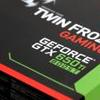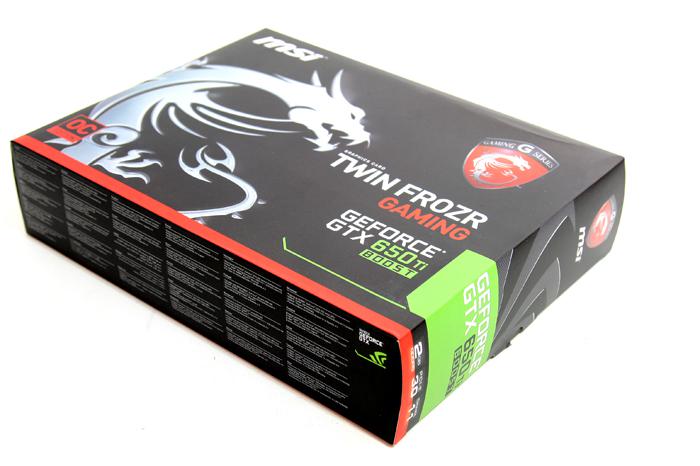Final words and conclusion
Final Words & Conclusion
The MSI GeForce GTX 650 Ti Boost OC edition series is a product series that was introduced as a card that needs to compete with the new AMD Radeon HD 7790 (released last week), and yeah it successfully wins from that product in almost any scenario. The MSI edition as such offers plenty of muscle to play today's games with good quality settings and Full HD monitor resolutions. While the rest of the 650 Cards are marginal and lack just a that little extra bite in performance, the Boost editions simply deliver what is needed.
Performance
Realistically the GeForce GTX 650 Ti Boost edition graphics card is a good chunk faster compared to the R7790. While the AMD card with your standard image quality settings is in the 30~35 FPS range at Full HD resolutions, this GTX 660 Ti Boost is continuously in the 40 FPS range at 1920x1080/1200. And really it's precisely where you need to be. The frame-rates are based on modern game titles with good image quality settings. So yeah, Nvidia did really well. To be fair, this card is not a GeForce GTX 650... it's a GTX 660 with a few shader processors disabled. As such you see this product continuously being only a few frames per second lower than that GeForce GTX 660. But who cares right? For less money you get nearly the same performance -- that's a win.
That makes the GeForce GTX 650 Ti Boost the all new affordable 169 EUR entry-level to mainstream gaming card. Based upon Kepler architecture this product will get you all the benefits and features this architecture has to offer. Even getting 3 or 4 monitors connected is an option. For the GTX 650 series new is a SLi connector.
Aesthetics
MSI is doing it their own style, resulting in the fact that they use their own design PCB combined with the TwinFrozr III cooler. And that's interesting as the 650 Ti Boost cards really will end up as the more cheap and affordable products, all the extra bling will cost money as well. Therefor do keep in mind that the design and money you pay for this product need to be in line. Overall the design looks good with a nice black PCB, and the TwinFrozr III cooler is just icing on top of the cake, totally silent whilst keeping that GPU chilled down.
Noise Levels
Directly related to the aesthetics is the cooling and thus the noise levels. MSI offers the TwinFrozr III cooler and as explained and shown, it just really offers good performance, under game load it stays at roughly 60 Degrees C (under the condition that you ventilate your PC properly). Noise wise there is little left to discuss as well, the dual-fan TwinFrozr III cooler uses three heapipes coming from a nickel-plated copper base, the two 80mm fans spin at a fairly low RPM, keeping the product totally silent.
Power Consumption
The GeForce GTX 650 Ti Boost editions are rated at a 140 Watt TDP. That is on the high side for a 650 series card really but this again is due to the nature of the GTX 660 DNA this card uses. Our measurements show roughly 135 Watt at peak with a modern game is more in line with what you'll see, our model was a factory reference version so expect slightly higher numbers with factory faster clocked products. Take that 135 Watt and add to that the processor, memory, motherboard and other peripheral devices, our recommendation stands at a 500 Watt power supply, with a decent overclock that should be sufficient.
Overclocking
Overclocking then, we should all point fingers to NVIDIA as pretty much all cards end up roughly at the same parameters. The boost versus overclock in the end depends a little on GPU transistor leakage and stuff like that. The board power design is 140 Watt, you may increase the power limit with another 10% which means 150~155 Watt of power consumption is at your disposal when overclocking. That means that this SKU could take another 100 MHz + a little something extra on the memory (350 Mhz). This will bring the operating frequency of the GPU towards 1267 MHz (it remains dynamic so per game / load it can differ a little). The 1267 MHz is pushing it to the limits though.
Price
As always prices remain debatable. We found the MSI GeForce GTX 650 Ti Boost OC edition selling at 160 EUR (incl VAT) here in the Netherlands. Prices will differ a bit per country of course, based on the fact that it is the 2 GB model, it comes overclocked at pretty interesting levels. The regular (non OC) model is priced 5 EUR cheaper, with that difference being so small, just go for the OC edition as it does come with a tiny factory overclock and of course the much better Twinfrozr III cooler.For that money you will receive a nice 2 GB graphics card that can play all the latest games at good image quality settings with very acceptable framerates at a resolution of 1920x1080/1200. So is it good value? Yes, it is a versatile and progressive card when it comes to features and options.
Final Words
I stated it a couple of times already, I am a bit of a fan of the GeForce GTX 650 Ti Boost itself, the MSI OC edition however ups it a notch in performance, it remains to be a small bump over reference however the TwinFrozr III cooler makes up for a lot as the cooler is just really good and very silent. The reason why I remain so excited about this product series is that the product allows you to play your games at 1920x1080 and everyone of you guys by now will have upgraded towards a monitor with a resolution of 1920x1080/1200. That's where this card will be a nice fit as it balances out game quality and performance really well. Concluding, the extra factory overclock is fun but seems to make only a very small difference, but every little bit helps right? If this is what your budget allows you to spend then yeah, very much recommended is it is a good value product with one of the best coolers in this segment.
Recommended Downloads
- Sign up to receive a notice when we publish a new article
- Or go back to Guru3D's front page



